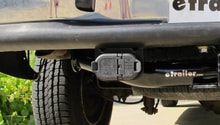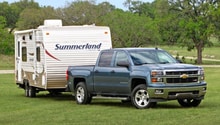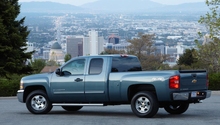Chevrolet Silverado 1999-2006: How to Install/Equalize a Trailer Hitch and Calculate Tongue Weight
The quoted payload and tow rating of your truck is one thing, but what your specific setup can do is another. Time to figure out what you're really working with.
This article applies to the Chevrolet Silverado GMT800 (1999-2006).
While the bed of a truck provides owners with a convenient and easy way to haul things, it does have limitations in regards to weight and size capacity. When you need to haul bigger, heavier things, you are going to need a trailer hitch. A hitch will also allow you to tow all sorts of things, from trailers to campers to boats. Installing a hitch on your Silverado is very easy, since the holes are already generally pre-drilled. Once installed, equalizing the hitch reduces trailer sway and improves handling, while calculating tongue weight ensures that you will be safe riding down the road.

Materials Needed
- Basic assorted size sockets/ratchet or wrench set
- 1/2" drill (optional)
- Tongue weight scale
- Box or 2x4's
- Tape measure
- Torque wrench
Step 1 – Install a trailer hitch
First, hold the hitch up underneath the truck to ensure all the holes line up with the factory holes underneath the truck and in the bumper. If not, some drilling will be necessary. Remove the factory bolts one at a time, and set them aside. Install the hitch hardware as shown in the installation manual that came with your particular hitch. Generally, this will involve installing reinforcement plates with carrier bolts. Set the hitch in place and install the nuts. Install the bolts from the hitch into the bumper. Leave everything loose until they are all in place, then tighten and torque per manufacturer's specifications.
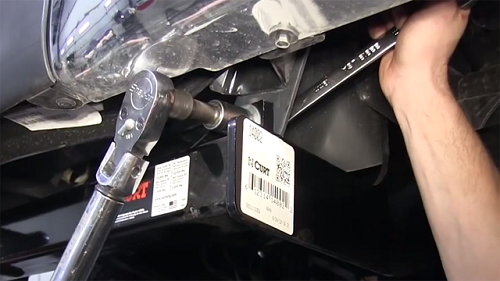
Step 2 – Equalize hitch
Much like hitch installation, installing an equalizer is generally a bolt-on job. First attach the brackets to the trailer frame, making sure they are aligned properly by measuring each side. Once bolted down, lower the trailer socket down onto the hitch ball and attach the equalizer bars to the tow vehicle. Use the pry bar to adjust the lift for proper weight distribution, and ensure both sides have the same amount of lift.

Step 3 – Calculate tongue weight
Ideally, your tongue weight should be between 10% and 15% of the trailer's gross weight. You can find the actual weight of your trailer on the trailer itself. Add that weight to the weight of the load on the trailer. Next, set up a box or a series of 2x4's until they are the same height as your truck's towing ball. Measure from the ground up to the receiver, and add three inches to accommodate the height of the ball. Place a tongue weight scale on top of the box of boards, and rest the tongue on it. If your tongue weight doesn't fall within the ideal range, you can adjust it by moving weight further behind the rear axle or by moving it forward. If your trailer has a movable axle, you can adjust it to shift weight forward or backward.
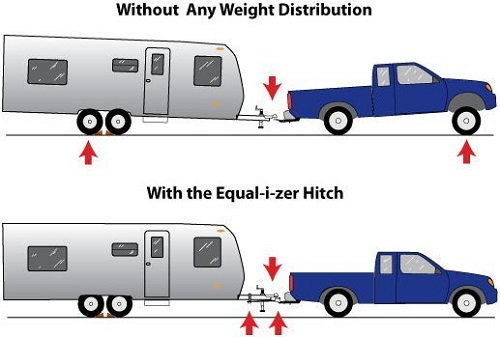
Related Discussion
- Silverado Towing Packages - ChevroletForum.com



